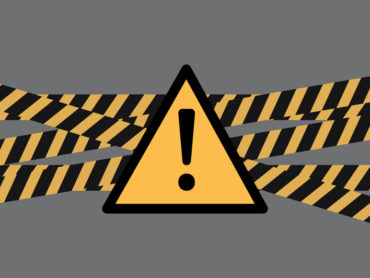The News Never Changes, It Just Happens to Different People
I’m often asked for my opinion of the very best example of public relations crisis management. Everyone expects me to cite the infamous Tylenol product tampering case of 1982.
But surprisingly, the Tylenol product tampering case is not what I consider the “best” example of crisis management.
The best crisis management cases are the ones you never hear about.
Mostly, the reason you never hear about them is that the company (and most likely their PR agency) realized in advance that a crisis can happen to anybody, and at just about any time, and they were well-prepared for how to act and respond when it inevitably did happen.
Here is the short version of what you and your company should be doing now, in advance of the inevitable chaos and scramble that a crisis will bring on:
- First and foremost, agree that managing and defending your organization’s reputation is always “Job One.” Hold close to your heart the admonition of Warren Buffet who once said, “It takes 20 years to build a reputation and five minutes to lose it.”
- Conduct a “Vulnerability Assessment.” What are your greatest risks? (make a list). Ask your CEO what keeps him or her awake at night? Identify and prioritize worst case scenarios.
- Then fix what you can in advance.
- Assign responsibilities and contingency accountabilities now, while cool heads can prevail, and outside of the glare of the spotlight. Hash out any potential differences now with lawyers (who often want to immediately take over and stonewall the media — which is almost always disastrous). Be mindful of the fact that even though you may find yourself in a crisis, somebody has to keep flying the plane or keep making the donuts (in other words, you still need to be able to do business while the crisis unfolds). Make sure you that you have someone at a high enough level whose job it is to not be immersed in the crisis, but to make sure that business continues as normally as possible.
- Identify your media spokesperson, and have a back-up in case that person is unavailable. Then make sure they are professionally trained in how to best communicate with and through the media. (I often say that dealing with the media is a lot like playing golf. Virtually anybody can go out there and simply do it, but it takes a fair amount of talent and a good deal of practice to do it well.)
- Develop an inventory of your communication assets – both those owned and controlled by you (i.e., your website and social media assets) and those who will likely be reporting on you during your crisis (like industry blogs and newsletters, publications, local and hyper-local media, etc.) and have up-to-date contact information (or passwords for owned assets) for each.
- Like it or not, your employees are front line – get them ready. Publish policies that proscribe their speaking about the company to the media, but also put measures in place to communicate with your staff, making sure that they are one of your chief audiences during a crisis.
Although every crisis presents its own set of issues, almost all crises have several consistent elements, which you can – and should – plan for in advance. In today’s world, the media cycle is down to seconds. The Internet and social media have made widespread communication – and dangerously, the potential for rumors to spread – almost instantaneous. Identifying potentially damaging issues and aggressively managing them is the key to protecting your firm’s good name and reputation.
Remember the old saying, “The news never changes, it just happens to different people.” A crisis can happen any time and to any company. If you aren’t prepared to tell your story, it is entirely probable that someone else will do it for you. Can you really afford not to be prepared?




















































































